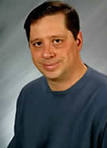create esquelle new_book as select [ * |very, very cool ]: My Review of Esquelle and the Tesla Protocol

Esquelle and the Tesla Protocol, Book I by Joe Dacy
File Size: 3067 KB
Print Length: 580 pages
Publisher: Joe Dacy II (June 24, 2014)
Sold by: Amazon Digital Services, Inc.
Language: English
ASIN: B00LADPBBO
Text-to-Speech: Enabled
OK, before I even start this review, I have a few questions I'd like to ask you, the reader. Here goes:
Do you know what relational database technology is?
Have you ever been, or are you now, a RDBMS programmer or administrator?
Have you ever heard of SQL? Do you know what it stands for? Can you code in it?
Have you ever heard of Oracle corporation? DB/2? Postgres? Ansa? Borland?
Have you ever heard of dBase II? III? Most infamously IV? Have you ever heard of a company called Ashton-Tate?
Do you know who Edgar Frank Codd is? Have you ever read his 13 commandments for relational database management systems?
Does it make you feel good to know that you know the difference between a tuple and a domain?
If you can answer YES to any of the above, then stop reading this review right now and go buy Esquelle and the Tesla Protocol by Joe Dacy. To help you grasp the point, go back to the top of this page and look at the cover. Closely.
All done? I'm sure that after reexamining the cover, you understood precisely why you should buy this book. And you know that I've just brought a little extra sunshine and joy to your life and you'll be thanking me years from now. No need to weep for gratitude or send gifts. I did this just because I'm that type of guy.
And you figured out that "Esquelle" is a Franconization of "SQL," right? I mean, how cool is that! (To make it all even better, the chapter headings are numbered in binary.)
And if you can't answer in the affirmative, you should still buy the book because it's an exciting and very cool read. And after you're done, you will have picked up just enough nerd cred to impress people at parties with your deep grasp of technology. Just don't push it when you're around a true nerd. You still don't know what query by example is and how it works so you run the risk of being found out. Otherwise, you'll do just fine.
By the way, in honor of this great book and topic, I'm running a little contest. During the 80s, many software companies released desktop RDBMS software packages for the IBM PC and some of the other competing systems. However, it was well known among the geek/RDBMS cognoscenti that "Ted" Codd was known to favor one product in particular.
What was the product and the name of the company?
The first five people to send me an E-mail with the answer will receive a free copy of my book, Rule-Set: A Novel of a Quantum Future . Send your answers to rickchapman@softletter.com. The winners will be inscribed on this site as Geek DBMS Supremos for all time.
BTW, yes, I am familiar with database programs and programming and have coded and worked with dBase II, III (if you want to know what happened to IV, pick up a copy of my book, In Search of Stupidity: Over 20 Years of High-Tech Marketing Disasters ), InfoStar, and Ansa/Borland Paradox up to version 3.5.
Databases rule the world. You don't see them and may not understand much about them, but all those computers maintaining your private financial transaction information that's periodically stolen by Russian mobsters and all those smartphones running all those apps that collect traffic data and restaurant reviews while storing nude pictures of your favorite celebrities that are also periodically stolen by both Russian mobsters and pimply teens who do understand databases run on a technology conceived of and described in a seminal paper released in 1969 by a British computer scientist you've probably not heard of but who changed the world in as fundamental a way as ever did Steve Jobs, Bill Gates, or Al Gore, who invented the Internet. Fortunately for Dr. Codd, he's deceased and doesn't have to worry about Jennifer Lawrence getting up into his grill about those pictures which you haven't seen. Right. Uh, huh. No, seriously, I believe you.
But if you had seen them, you could thank Dr. Codd, the father of relational database technology.
I'm not going to describe how relational database management systems (RDBMS) systems work. If you want to learn the basics, go buy Esquelle and the Tesla Protocol and you can learn at the hands of a hot French chick who kicks the snot out of terrorists via savate. (What better introduction to technology can there be?) Suffice it to say that some people become very passionate about the issue. During the 80s, when relational databases were sweeping through technology and dispatching the older hierarchical systems like Huns picking off Romans, ferocious geek wars broke out periodically over the topic of which database adhered most closely to the True Relational Faith. Fortunately, database programmers are poor fighters and no one was usually hurt.
OK, enough geeking out. Esquelle and the Tesla Protocol takes place in a world twenty five years in the future. Our heroine, Esquelle, is a database query master (ladies, take note of author Dacy's belief that you can kick ass via high tech just as well as any guy) who has a chip implant in her skull that enables her to tap into the world's databases. When we first meet Esquelle, she is sitting outside a French bistro enjoying a cappuccino while being closely observed by two Arab terrorists and two American spies from the NSA.
They, obviously, are all up to no good and when Esquelle spots the Arab operatives eyeing her a little too closely, their doom is sealed when she uses her implant to uncover their identity via her mastery of SQL and ability to data mine the planet. Forewarned, she foils their kidnap attempt via a savate slam down, not really needing the assistance her "Uncle Robbie," a top French security head, sends along to her aid. Still, it's good to know you can count on your family in a pinch and "Uncle" Robbie will prove useful in the future.
After this high-stress interlude, Esquelle heads off to the US to enjoy some much needed R&R. She's followed every step of the way by a bevy of shadowy spies, terrorists, and a handsome French operative who's interest in discussing the topic of access privileges with Esquelle clearly transcends just the topic of database tables. The reason for this spook frenzy is not Esquelle herself, but her brother, Bernard, whom the crowd hopes Esquelle will eventually lead them to.
Bernard is an eccentric genius who lives in the South Bronx (138th Street, not a neighborhood currently attracting a lot of quantum physicists these days, though the area is slowly gentrifying and Esquelle does take place 25 years from now.) Everyone's interested in Bernard because while living in the Bronx, he's apparently figured out a way to use tachyons (theoretical and, to date, unobserved quantum particles) to send messages both into the future and the past. This will revolutionize text messaging, obviously, and everyone wants in on the action.
One of the interesting techniques author Dacy employs is a high level of detail when discussing the fast moving events taking place in the book. A second kidnapping attempt on Esquelle that takes place on the Seattle waterfront is backed up with maps. Hotels and locations are shown via eye in the sky photography. There are numerous charts and tables. Esquelle's data queries use proper SQL syntax. As you read through the story, you begin to almost feel as if you're attending a briefing, not reading a novel. The effect is to draw you in to the story and make Esquelle more realistic and immediate, an atmosphere I try to create in my own novel, Rule-Set.
Joe Dacy is a natural heir of Tom Clancy and if you're looking for someone to fill the void left by the departure of the man who gave us The Hunt for Red Octobe r or Patriot Games (my two favorites from his oeuvre), then the hour and the book are met. (You geeks have already bought Esquelle and are busy scanning the pages for any mistakes in the SQL.)
As for me, Joe had me at SELECT * FROM.
Oh, I'm sorry. What's the "Tesla Protocol?" I'm not telling you. But Nikolas Tesla was the man who spanked Thomas Edison in the high stakes electricity shootout between DC vs AC and before his untimely death, announced he'd designed a deployable particle beam cannon. To this day, no one is sure if he was kidding or not.
Published on October 15, 2014 07:09
No comments have been added yet.



